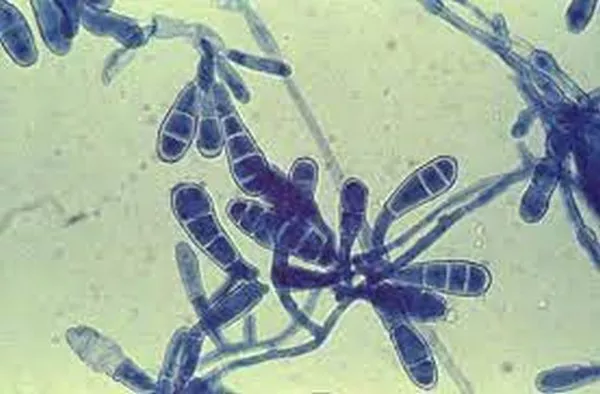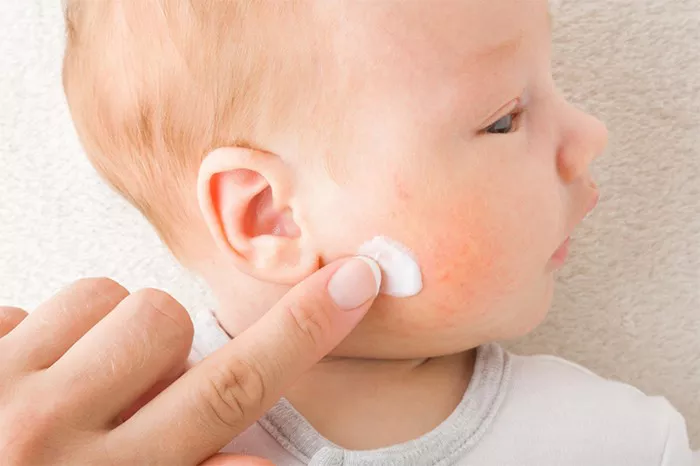Ringworm, also known as tinea, is a fungal infection that affects the skin. Despite its name, ringworm is not caused by a worm but by a type of fungus called dermatophytes. This infection can occur on various parts of the body, including the scalp, feet (athlete’s foot), groin (jock itch), and other areas. It’s characterized by red, itchy, circular patches with raised edges, often resembling a ring, hence the name.
Treating ringworm promptly is crucial to prevent it from spreading to other parts of the body or infecting other people. One of the most effective methods of treating ringworm is by using topical antifungal treatments. This article will cover the best topical treatments for ringworm, how they work, and tips for using them effectively.
Understanding Topical Treatments for Ringworm
Topical treatments are applied directly to the affected area of the skin. These treatments are widely available over-the-counter (OTC) or by prescription, depending on the severity of the infection. Topical antifungal medications work by inhibiting the growth of fungi, preventing the infection from spreading further, and ultimately killing the fungus.
Common topical treatments for ringworm include creams, ointments, gels, sprays, and lotions. These medications typically contain active antifungal ingredients such as clotrimazole, miconazole, terbinafine, and ketoconazole.
Key Ingredients in Topical Ringworm Treatments
Several antifungal ingredients are known for their effectiveness in treating ringworm. Below are some of the best options:
1. Clotrimazole
Clotrimazole is one of the most common antifungal ingredients found in over-the-counter creams and ointments. It works by stopping the growth of fungi and is effective in treating ringworm, athlete’s foot, and jock itch.
How to Use: Apply clotrimazole cream twice a day to the affected area. Be sure to clean and dry the area before application.
Common Brands: Lotrimin AF, Canesten
Pros: Clotrimazole is easily accessible and effective for mild to moderate ringworm infections.
Cons: Some individuals may experience skin irritation or an allergic reaction. Always perform a patch test before using the cream extensively.
SEE ALSO: Preventing 5 Ringworm Transmission from Cats to Humans
2. Miconazole
Miconazole is another powerful antifungal ingredient that is effective in treating a variety of fungal infections, including ringworm. It works similarly to clotrimazole by inhibiting the growth of fungi.
How to Use: Miconazole cream should be applied to the affected area once or twice a day.
Common Brands: Micatin, Desenex
Pros: Miconazole is versatile and can be used to treat multiple fungal infections.
Cons: Prolonged use may lead to skin irritation, so follow the instructions carefully.
3. Terbinafine
Terbinafine is a strong antifungal ingredient and is considered one of the most effective treatments for ringworm. Unlike clotrimazole and miconazole, terbinafine not only stops the growth of fungi but also kills it.
How to Use: Terbinafine should be applied once or twice daily. It is recommended to continue using the cream for at least one week after symptoms disappear to prevent a recurrence.
Common Brands: Lamisil, Terbinex
Pros: Terbinafine works quickly and may provide relief in a shorter time compared to other antifungal treatments.
Cons: It can cause dryness, peeling, and redness in sensitive skin.
4. Ketoconazole
Ketoconazole is a prescription-strength antifungal treatment used to treat severe or persistent ringworm infections. It is also effective for infections that don’t respond to over-the-counter treatments.
How to Use: Apply ketoconazole cream once daily or as directed by a healthcare provider.
Common Brands: Nizoral
Pros: Ketoconazole is effective against resistant fungal infections and can be used in cases where other treatments have failed.
Cons: It is usually more expensive and may require a prescription. Side effects may include irritation or stinging at the application site.
How to Choose the Best Topical Ringworm Treatment
When choosing a topical treatment for ringworm, several factors should be considered:
1. Severity of the Infection
Mild to Moderate Infection: For minor cases of ringworm, over-the-counter treatments containing clotrimazole, miconazole, or terbinafine are usually effective. These are available at most pharmacies and can be used without a prescription.
Severe or Persistent Infection: If the infection is widespread, recurrent, or does not improve with OTC treatments, a stronger prescription medication like ketoconazole may be necessary. Consult a healthcare provider in these cases.
2. Location of the Infection
Body Ringworm (Tinea Corporis): Most OTC antifungal creams, like those with clotrimazole or terbinafine, can be applied to the body.
Scalp Ringworm (Tinea Capitis): Topical treatments are less effective for scalp ringworm because the infection affects hair follicles. In these cases, an oral antifungal medication is usually prescribed along with a medicated shampoo containing selenium sulfide or ketoconazole.
Foot Ringworm (Athlete’s Foot): Terbinafine or miconazole creams are often effective for treating athlete’s foot. Sprays and powders can also help keep the area dry.
Groin Ringworm (Jock Itch): Antifungal powders, sprays, or creams containing miconazole or terbinafine are commonly used to treat jock itch.
3. Personal Sensitivity
Some people have sensitive skin that may react to certain antifungal ingredients. If you have a history of allergic reactions or sensitive skin, look for topical treatments labeled as hypoallergenic. Always perform a patch test on a small area of skin before applying a large amount of any topical medication.
4. Duration of Treatment
Different antifungal treatments require different lengths of time to be fully effective. Follow the instructions on the packaging or from your doctor carefully. Some treatments may need to be applied for several weeks, even after symptoms disappear, to prevent the infection from returning.
Tips for Using Topical Treatments Effectively
Topical treatments work best when combined with good hygiene practices. Here are some tips to ensure optimal results:
1. Clean and Dry the Affected Area
Before applying any antifungal cream or ointment, gently clean the affected area with soap and water, then pat it dry. Fungi thrive in moist environments, so it’s essential to keep the skin dry.
2. Apply a Thin Layer
Use a small amount of the topical treatment and apply a thin layer to the affected area, extending it slightly beyond the edges of the infection. This helps to ensure that all fungi, including those that may not be visible, are treated.
3. Don’t Skip Doses
To effectively kill the fungus and prevent the infection from returning, it’s crucial to apply the treatment exactly as directed. Skipping doses may allow the fungus to continue growing, prolonging the infection.
4. Use for the Recommended Duration
Even if the symptoms disappear after a few days, continue using the topical treatment for the full recommended duration. This prevents the infection from coming back.
5. Wash Your Hands After Application
Ringworm is contagious. Always wash your hands thoroughly after applying the antifungal treatment to avoid spreading the infection to other areas of your body or to others.
Preventing Ringworm from Recurring
Once the infection has been treated, taking steps to prevent future outbreaks is essential. Here are some preventive measures:
1. Keep Skin Clean and Dry
Fungi thrive in warm, moist environments. Be sure to shower regularly, dry off completely after bathing, and wear breathable clothing.
2. Avoid Sharing Personal Items
Ringworm can be spread through shared towels, clothing, hairbrushes, and other personal items. Avoid sharing these items with others, especially if you or someone you know has a fungal infection.
3. Change Clothing Frequently
If you sweat a lot, change your clothing regularly, especially in areas prone to fungal infections like the feet, groin, and underarms.
4. Disinfect Surfaces
If you’ve had a ringworm infection, disinfect surfaces like shower floors, gym equipment, and any areas where the fungus may have come into contact. This helps prevent the infection from spreading or returning.
When to See a Doctor
If your ringworm infection does not improve with OTC topical treatments after two weeks, or if it continues to spread, consult a healthcare provider. You may need a stronger prescription medication or oral antifungal treatment.
Additionally, ringworm of the scalp or nails often requires oral antifungal medications, as topical treatments alone may not be sufficient to penetrate these areas.
Conclusion
The best topical treatments for ringworm include antifungal creams, ointments, and sprays containing ingredients like clotrimazole, miconazole, terbinafine, and ketoconazole. These treatments are effective when used properly and consistently. Remember to keep the affected area clean and dry, and follow the recommended treatment duration to prevent the infection from coming back. If the infection persists, consult a healthcare provider for further treatment.
Related topics:

























